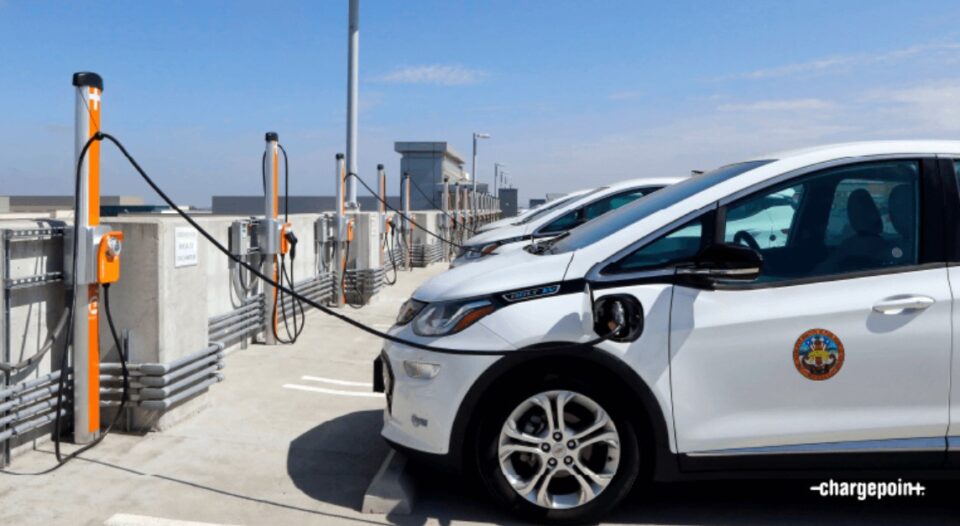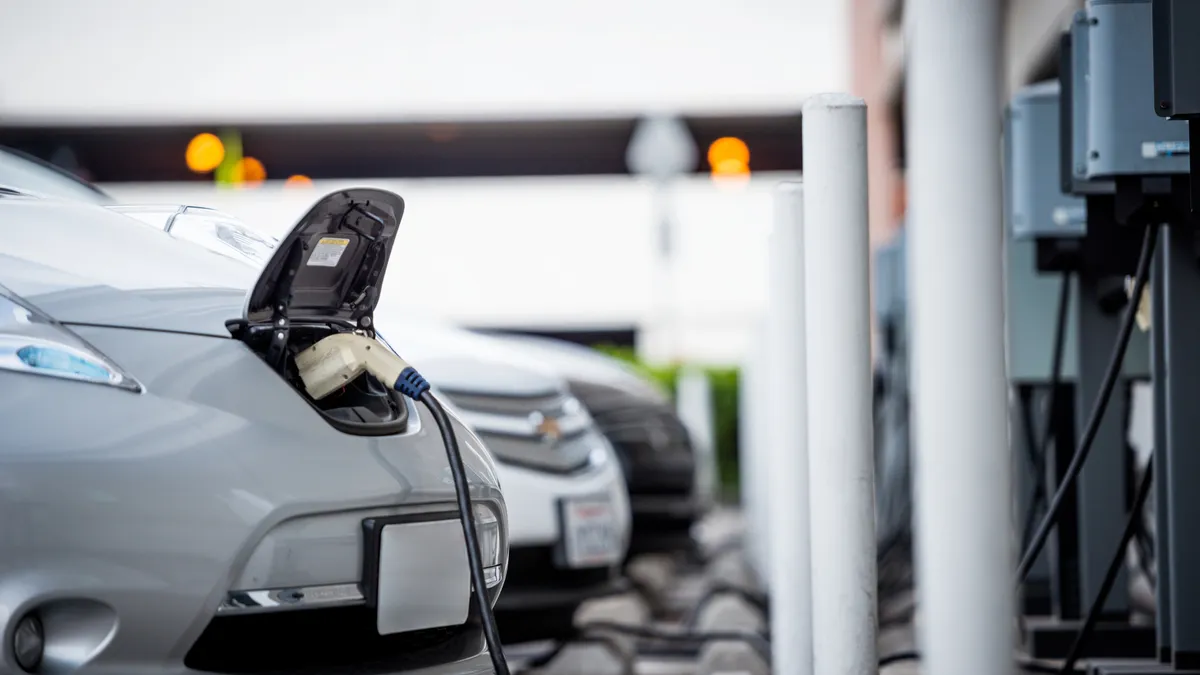Everything You Should Know Before You Decide to Buy EV Charging news
Leading EV Charging Information: Trick Updates on Infrastructure and Development

Current Developments in Fast-Charging Innovation

Furthermore, improvements in battery technology, including boosted thermal management systems and higher energy density batteries, enhance fast-charging capacities. These developments alleviate the threat of battery destruction during fast charging, making certain longevity and performance for EV owners.
In addition, the assimilation of clever charging services is improving customer experience, enabling real-time monitoring and dynamic pricing versions. EV Charging news. This flexibility allows chauffeurs to enhance billing times and prices based upon grid need
As automakers continue to buy fast-charging networks, the partnership between sector stakeholders is crucial. Partnerships between charging station companies and vehicle manufacturers are leading the way for comprehensive protection, eventually promoting a much more robust EV ecological community. These advancements are critical in supporting the transition to lasting transport.
Federal Government Campaigns for Billing Growth
Government initiatives play a vital role in the expansion of electrical lorry (EV) billing facilities, assisting in the transition to sustainable transport. Different federal and state programs are being executed to enhance charging access, reduce the economic worry on customers, and promote the fostering of electrical lorries.
Significantly, the U.S. federal government has actually alloted considerable financing through the Infrastructure Financial Investment and Jobs Act, which allocates $7.5 billion for EV charging network growth across the country. This funding is targeted at releasing countless new billing stations, particularly in underserved areas, therefore attending to range anxiousness among possible EV customers.
Additionally, numerous states are establishing legislation to simplify the allowing process for billing station installations, which is important for increasing deployment. Incentives such as tax credit ratings and rebates for both customers and companies are also being presented to encourage the installment of billing framework.
In addition, public-private collaborations are significantly ending up being an emphasis, leveraging private financial investment to enhance government financing. These initiatives highlight a joint approach important for constructing a efficient and extensive EV billing network, ultimately contributing to a greener and even more sustainable future.
Innovative Battery Solutions Enhancing Efficiency
Reinventing the landscape of electric lorry (EV) modern technology, innovative battery services are significantly improving performance and efficiency. Advances in battery chemistry, particularly with lithium-sulfur and solid-state batteries, are bring about increased energy density, which permits longer varieties and faster charging times. These new battery kinds have the possible to outperform conventional lithium-ion batteries by providing higher capabilities while decreasing weight, consequently enhancing total lorry performance.
In addition, growths in battery monitoring systems (BMS) are maximizing power usage and prolonging battery life-span. Smart formulas keep an eye on battery health and wellness and performance, enabling real-time adjustments to charging and releasing procedures. This not just improves the efficiency of the battery but also makes sure a much more trustworthy and sustainable power source for EVs.
Additionally, the assimilation of reusing technologies is addressing the ecological effect of battery production and disposal. Innovations in second-life applications for EV batteries are facilitating their use in power storage systems, contributing to a round economic climate.
As these innovative battery remedies proceed to progress, they promise to change the EV market, making electric vehicles a lot more enticing and available to a broader target market while supporting worldwide sustainability goals.

Partnership Between Automakers and Charging Networks
Acknowledging the important demand for a durable billing framework, automakers are increasingly collaborating with billing network suppliers to boost the EV possession experience (EV Charging news). These partnerships intend to develop a seamless charging community that benefits customers and sustains the shift to electrical automobiles
Major automobile brands are signing up with pressures with recognized charging networks to expand their billing terminal protection, making sure motorists have access to trusted and look at more info hassle-free charging options. For instance, collaborations with networks like ChargePoint and Electrify America enable automakers to integrate charging remedies directly into their lorries' navigating systems, directing customers to the nearby stations and providing real-time schedule updates.
Furthermore, these cooperations usually cause the growth of fast-charging innovations that significantly minimize the time needed to reenergize an EV. By pooling sources and competence, car manufacturers and charging networks can introduce faster, producing solutions that satisfy the growing need for electric wheelchair.
On top of that, joint efforts might also bring about even more standardized billing methods, which can minimize customer confusion and promote wider EV fostering. Overall, these calculated partnerships are critical in developing a reliable and user-friendly billing infrastructure that meets the requirements of a broadening electric automobile market.
Difficulties Facing EV Charging Facilities
As the electrical lorry market continues to grow, numerous difficulties are appearing that prevent the development of a detailed billing facilities. One of the main obstacles is the insufficient variety of billing stations, particularly in underserved and rural metropolitan areas. This space produces variety stress and anxiety amongst prospective EV purchasers, preventing them from making the button.
Furthermore, the absence of standardization in billing innovation complicates the facilities landscape. Variations in plug kinds and charging speeds can create confusion for customers and raise functional intricacies for billing network drivers. The assimilation of billing terminals into existing electric grids positions significant challenges. Several regions deal with capacity constraints, needing considerable investments in grid upgrades to suit boosted demand.
Another pushing issue is the high price connected with the installation and upkeep of charging helpful resources terminals, which can be a barrier for both public entities and private organizations. Lastly, governing obstacles and zoning restrictions can postpone the deployment of billing infrastructure, hampering progress in broadening important solutions. Dealing with these difficulties will certainly be important for cultivating a durable try this website EV community that sustains the change to lasting transport.
Verdict
To conclude, the ongoing improvements in EV billing modern technology, sustained by significant government efforts and ingenious battery options, are critical for the development and efficiency of electric vehicle infrastructure. Collaborations between automakers and charging companies additionally improve station protection, dealing with the growing demand for available charging options. Despite obstacles that linger within the EV billing landscape, these advancements represent a positive trajectory towards a more effective and sustainable electrical lorry ecological community.
Technologies in billing facilities have actually led to the advancement of ultra-fast chargers qualified of supplying up to 350 kW of power, substantially decreasing charging times. Variants in plug types and billing speeds can create complication for individuals and enhance functional intricacies for charging network drivers.In final thought, the continuous developments in EV charging technology, sustained by significant federal government efforts and innovative battery remedies, are important for the development and effectiveness of electrical car infrastructure. Cooperations between car manufacturers and charging carriers additionally improve terminal protection, addressing the expanding demand for accessible billing options. In spite of challenges that continue within the EV billing landscape, these developments indicate a positive trajectory in the direction of a more effective and lasting electric automobile community.